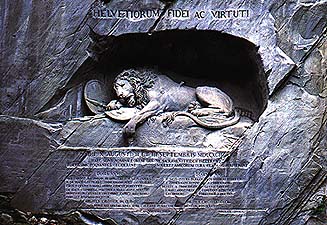
Today we go to the well-preserved medieval city of Berne.
Berne is the capital of Switzerland and is the fourth most populous city in the country.
The official language of Berne is German, but the main spoken language is the Almannic dialect called Bernese German.
In 1983, the historic old town in the center of Berne became a UNESCO World Heritage Site, and Berne is ranked among the world's top ten cities for the best quality of life.
The origin of the name Berne is uncertain. According to the local legend, Berchold V, Duke of Zahringen, the founder of the city of Berne, vowed to name the city after the first animal he met on the hunt, and this turned out to be a bear. It has long been considered likely that the city was named after the Italian city of Verona, which at the time was known as Bern in Middle High German.
The bear was the heraldic animal of the seal and coat of arms of Berne from at least the 1220s. The earliest reference to the keeping of live bears in the Barengraben dates to the 1440s.

We will get to experience the world's first 360 degree revolving cable car from Engelberg to Mt. Titlis. This 10,000 feet high glacier paradise offers a snow and ice experience on the highest viewpoint in Central Switzerland.

I'd rather go for the chairlift though :)

Lucerne is the capital of the Canton of Lucerne and the capital of the district with the same name. With a population of 76,200 people, Lucerne is the most populous city in Central Switzerland, and a nexus of transportation, telecommunications, and government of this region.
Due to its location on the shore of Lake Lucerne within sight of Mount Pilatus and Rigi in the Swiss Alps, Lucerne has long been a destination for tourists.
The city remained strongly Roman Catholic into the 21st century.
The 2000 census showed that the dominant religion of the city was Roman Catholicism, followed by Protestantism and a small percentage of Jews, Muslims, and individuals who did not hold to any religion.
The Chapel Bridge is a 204m long bridge crossing the Reuss River in the city of Lucerne. It is the oldest wooden covered bridge in Europe, and one of Switzerland's main tourist attractions.
The covered bridge, constructed in 1333, was designed to help protect the city of Lucerne from attacks. Inside the bridge are a series of paintings from the 17th century, depicting events from Lucerne's history. Much of these paintings were destroyed in a 1993 fire, though the bridge itself was quickly rebuilt.
Adjoining the bridge is the 43m tall Wassertum (Water Tower), an octagonal tower made from brick, which has served a prison, torture chamber, watchtower and treasury. Today the tower, which is part of the city wall, is used as the guild hall of the artillery association. The tower and the bridge are Lucerne's trademarks and form the most photographed monument in the country.

The Lion Monument, or the Lion of Lucerne, is a sculpture designed by Bertel Thorvaldsen. It commemorates the Swiss Guards who were massacred in 1792 during the French Revolution, when revolutionaries stormed the Tuileries Palace in Paris. The American writer Mark Twain described the sculpture of a mortally wounded lion as "the most mournful and moving piece of stone in the world."

We will also get to visit Bucherer, the largest and most well-known watch and jewellery shop in Switzerland.
I heard they give out free souvenirs ;)
No comments:
Post a Comment